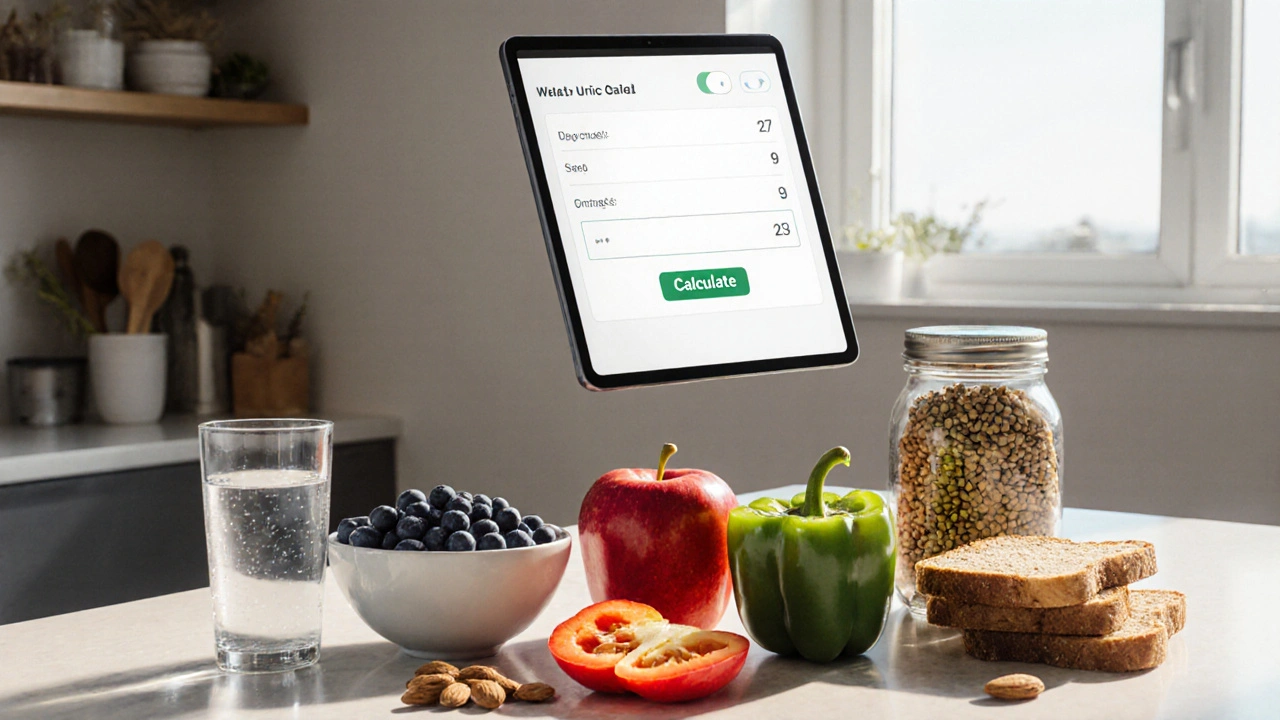Diet for Uric Acid: Easy Changes That Really Work
If you’ve ever had a painful gout flare, you know how frustrating it can be. The good news is that what you eat plays a big role in how much uric acid builds up in your body. Adjusting a few everyday meals can keep those sudden joint pains at bay, without turning your kitchen upside down.
What Foods Raise Uric Acid?
Uric acid spikes when you eat a lot of purines – natural compounds found in certain foods. High‑purine items include red meat, organ meats (like liver), shellfish, and some fish such as sardines or anchovies. Beer and sugary drinks also make it harder for your kidneys to clear uric acid. Cutting back on these doesn’t mean you have to give up flavor; swapping them for lower‑purine choices does the trick.
Low‑Purine, High‑Help Foods
Here’s a quick list of foods that help keep uric acid low:
- Cherries – research shows they can reduce gout attacks.
- Dairy (especially low‑fat) – provides protein without the purine load.
- Whole grains – oats, brown rice, and quinoa are gentle on the kidneys.
- Vegetables – most are low in purines; go for leafy greens, carrots, and bell peppers.
- Hydration – water flushes out uric acid, aim for at least 8 glasses a day.
Adding these to your daily menu is simple. A breakfast of oatmeal with low‑fat milk and a handful of cherries sets a solid tone. For lunch, try a mixed‑bean salad with lots of veggies; beans have moderate purines but the fiber balances it out. Dinner can be grilled chicken (skinless) with quinoa and steamed broccoli.
Portion control matters too. Even low‑purine foods can add up if you overeat. Keep protein servings to about 3‑4 ounces per meal and fill half your plate with vegetables. This balance gives your body the nutrients it needs while staying easy on uric acid.
Don’t forget beverages. Swap sugary sodas and beer for sparkling water with a splash of lemon or plain tea. If you love coffee, stick to moderate amounts – too much caffeine can interfere with uric acid excretion.
Another tip: spread out your protein intake throughout the day instead of loading it all at dinner. Small, regular meals help your kidneys process waste more efficiently.
Finally, keep an eye on your weight. Extra body fat can raise uric acid levels, and losing even a few pounds often reduces flare‑ups. Pair your diet with gentle activity like walking or cycling to boost overall health.
In short, a gout‑friendly diet isn’t about strict bans; it’s about smarter swaps, portion awareness, and staying hydrated. Try adding a few of the low‑purine foods listed above, cut back on the high‑purine culprits, and watch how your joints feel. Your next meal could be the first step toward a pain‑free day.
How a Plant-Based Diet Lowers High Uric Acid and Prevents Gout
By Lindsey Smith On 1 Oct, 2025 Comments (10)

Discover how a plant‑based diet can lower high uric acid, reduce gout attacks, and improve kidney function with practical food tips, a 7‑day menu, and FAQs.
View More




